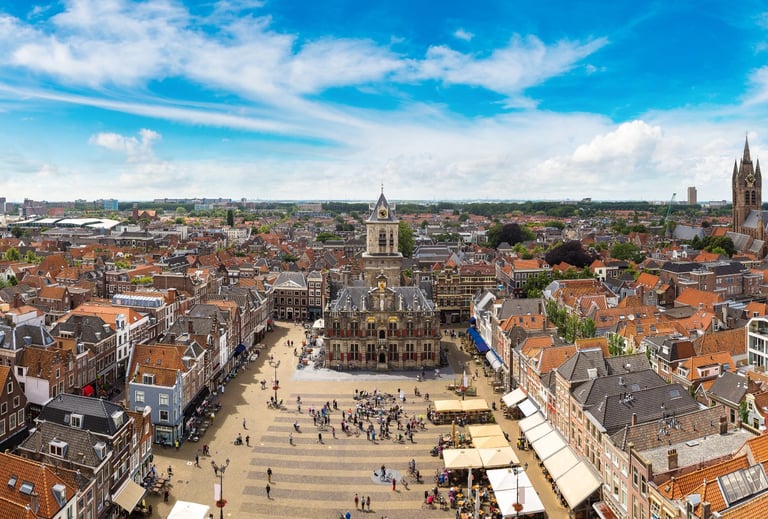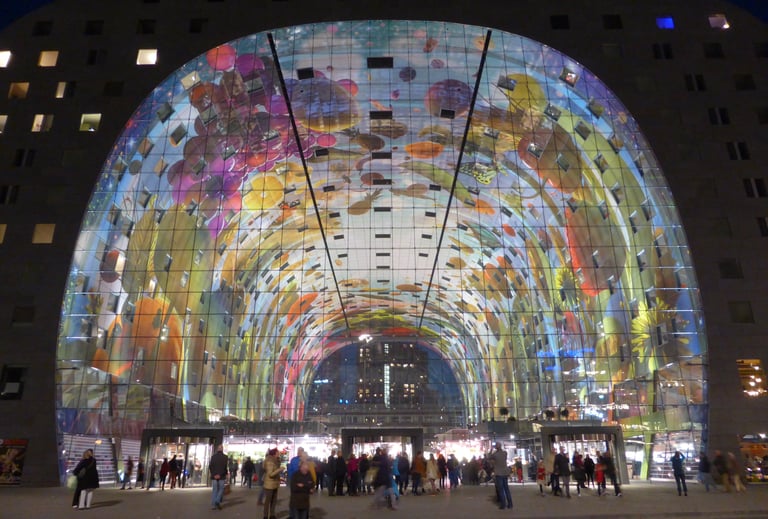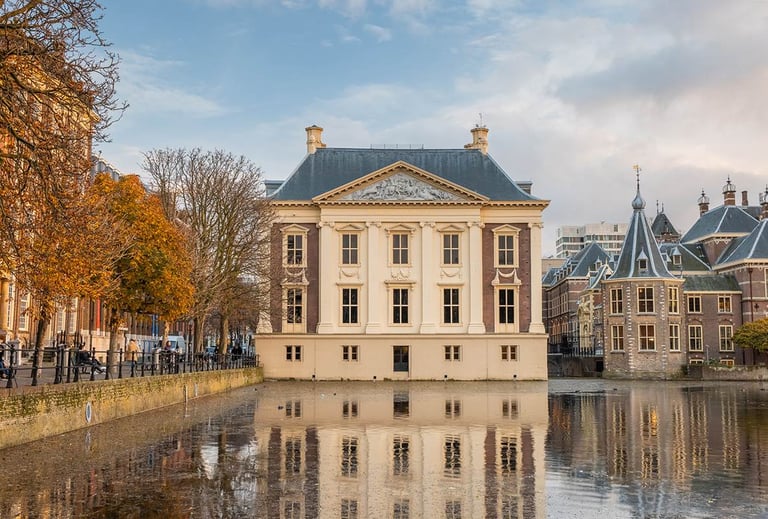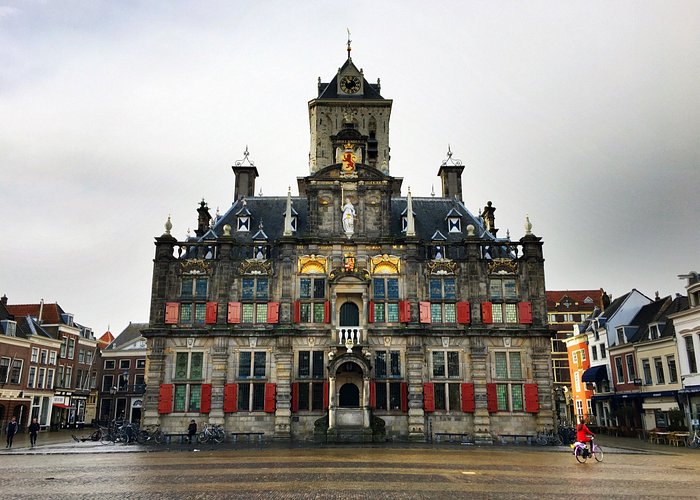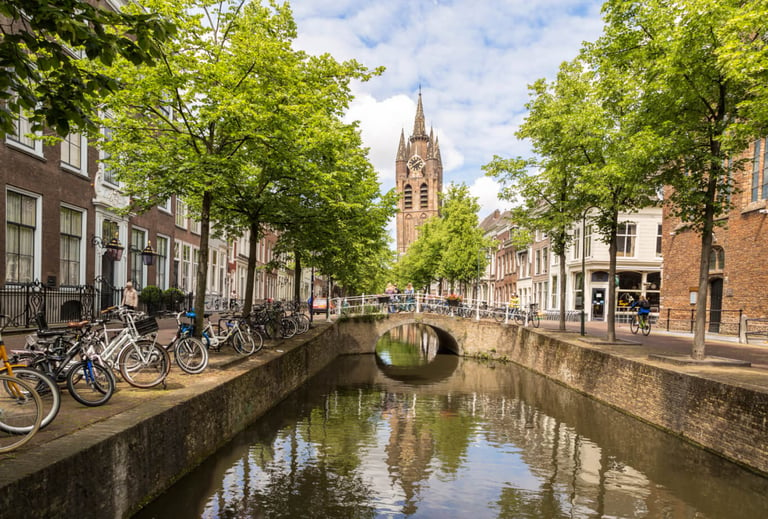
Rotterdam - The Hague - Delft
ROTTERDAM
It's located in the province of South Holland. Its name comes from the damming of the Rotter River.
We'll visit the iconic Erasmus Bridge and the famous Markthal, and those are just a few of the must-see attractions in this city.
We'll also see the cube houses, the Calypso Building, and take a break at the Hotel New York.
Rotterdam is the largest port in Europe, spanning 40 km of port area. During the Second World War, in May 1944, it was bombed by the Germans, leaving only the Gothic church of Saint Lawrence (1300).
Greater Rotterdam has 1,600,000 inhabitants, while Rotterdam itself has 619,879 inhabitants.

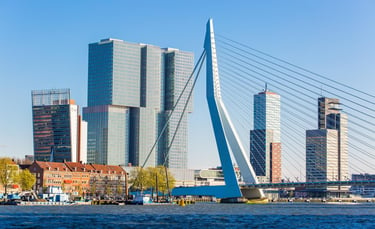
DEN HAAG - THE HAGUE
Capital of the South Holland province, with 515,880 inhabitants. The Dutch parliament and government reside in The Hague, as does the residence of the royal house, making it the location for almost all embassies, ministries, the International Court of Justice, and the International Criminal Court.
The city's name originates from the 17th century, from the forest ('HAAG') of the count of Holland. The symbol of The Hague is a stork.
The present-day Hague has existed since 1230 when Count Floris IV constructed a castle here, later completed by Floris V with the building of the parliamentary courtyard.
In 1899, The Hague hosted the first peace conference, which led to the establishment of a permanent court of justice.
The Hague is built on dunes and partly on marshland. Of importance to us is the Mauritzhuis, the residence of Maurice of Nassau, built during the time Maurice of Nassau was in Brazil, hence incorporating Brazilian woods in its ornaments and staircases.
The Hague's government, Haagse Kracht, is known as 'The Hague's Strength,' a coalition of municipalities and legislators from the parties D66, PvdA, VVD, and CDA
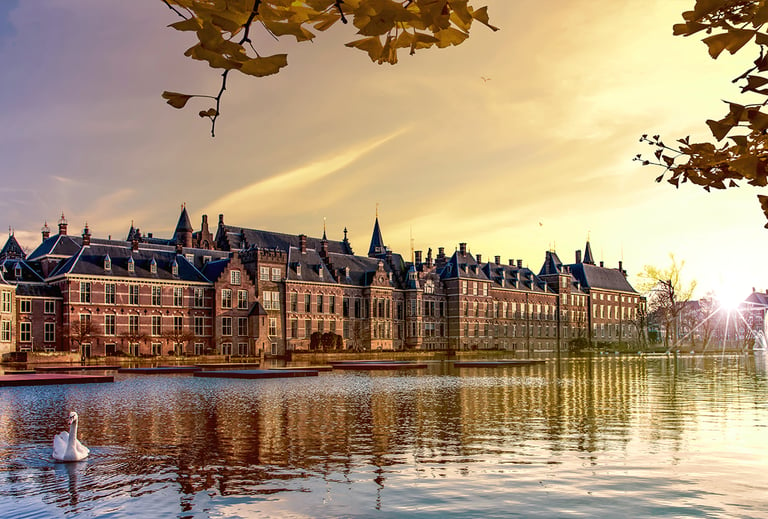

DELFT
The city of ceramics and the residence of William the Silent in the 16th century, known as the 'Father of the Fatherland.' At the time, he led the growing Dutch national resistance against Spanish occupation, known as the Eighty Years' War.
It's also the city of the painter Johannes Vermeer ('Girl with a Pearl Earring').
Delft is a popular tourist destination in the Netherlands, renowned for its historical ties to the House of Orange-Nassau and for being home to the Delft University of Technology (TU Delft).
The city of Delft emerged alongside a canal, the 'Delf,'
From 1246, trade and industry flourished. By 1560, Amsterdam, with 28,000 inhabitants, became the largest city, followed by Delft, Leiden, and Haarlem, each with around 14,000 inhabitants.
